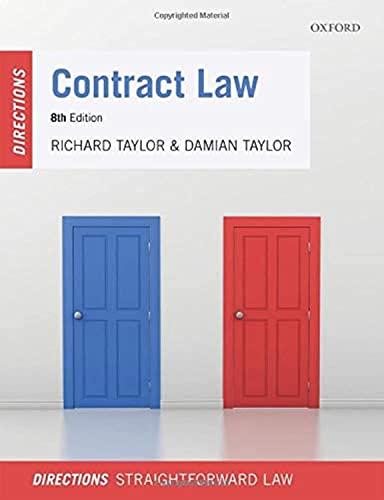Question
The Commerce Clause allows Congress to regulate interstate commerce including state-imposed statutes -- particularly when they are discriminatory or create barriers to trade. With this
The Commerce Clause allows Congress to regulate interstate commerce including state-imposed statutes -- particularly when they are discriminatory or create barriers to trade. With this in mind, please respond to the following questions posted below in bold.
Background - -Summarized here for convenience. (Additionalinformation is provided in the text on page 112 under "State Legislative Power".) Though not required, you may access the full case using this citation: Granholm v. Heald, 544 U.S. 460 (2005).
FACTS:
Michigan and New York permitted in-state wineries to sell directly to consumers but required out-of-state producers to sell to wholesalers two steps removed from retail sales. This resulted in a much longer distribution channel for out-of-state wineries to get their products to the consumer.
Each of these state statutes created an impossible barrier for many small vineyards. Key problems:
- Inability to attract wholesalers (not enough volume produced )
- Increased cost (additional layers of overhead associated w/"middlemen")
So... no access to the local markets.
Local residents and out-of-state wineries sued claiming a violation of the Commerce Clause.
Result: ==> "Split in the Circuits"
- 6th Circuit Court of Appeals held the statutes violated the Commerce Clause
- 2nd Circuit Court of Appeals declared the statutes valid
Supreme Court accepted the case to ensure uniform application of the Constitution.
******************************************************************
- Describe the state statutes that were challenged in this case.
- Which aspect of the Commerce Clause does this case involve?
- Why is this aspect of the clause important? - How is it an outgrowth of our nation's experience under the Articles of Confederation?
- What is a "split in the circuits"?
- How did these statutes discriminate against interstate commerce?
- How did the states justify these laws? Were facts or evidence provided to support their argument?
- What was the result?
Step by Step Solution
There are 3 Steps involved in it
Step: 1

Get Instant Access to Expert-Tailored Solutions
See step-by-step solutions with expert insights and AI powered tools for academic success
Step: 2

Step: 3

Ace Your Homework with AI
Get the answers you need in no time with our AI-driven, step-by-step assistance
Get Started


